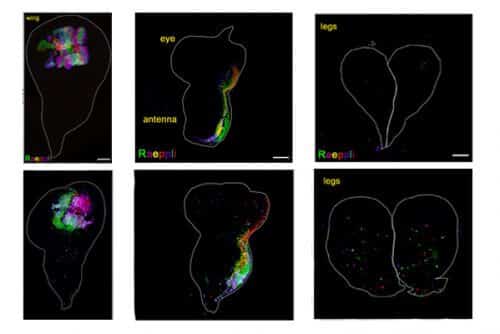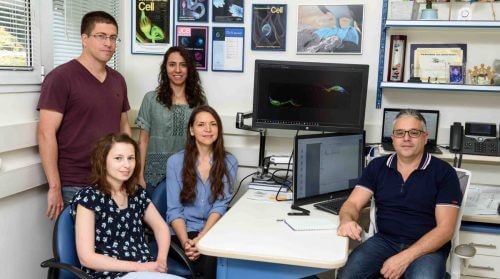Weizmann Institute of Science scientists discovered that the epithelial cells of the fruit fly larva, which had removed the caspases responsible for programmed cell death, began to migrate through the tissue - and even invade other tissues

If the molecular machines in our cells were as noisy as machines in a factory, our bodies would not stop making noise for a moment. The destruction machines of the cell, enzymes called caspases, "make noise" non-stop, although only in special circumstances they cause the cell to destroy itself. The incessant noise of these machines was for years a mystery. Recently, Weizmann Institute of Science scientists dispelled some of the fog surrounding the non-destructive activity of the machines of destruction. These discoveries, which were recently published in the scientific journal Nature Communications, may pave the way for personalized radiation therapy for cancer patients, as well as shed light on the evolutionary transition from unicellular to multicellular organisms.
In a previous study, Prof. Eli Arma and his group from the Department of Molecular Genetics showed that two caspases are responsible for executing a programmed cell death called apoptosis in the epithelial tissue of the fruit fly larva. When the scientists removed these caspases from the fly cells, through genetic engineering, they obtained cells that refused to die - even after being bombarded with radiation that caused extensive damage to their DNA. In the new study, led by Dr. Anna Gorlik-Ashkenazi, at the time a research student in Prof. Arma's laboratory, the scientists examined what happens to the "undead" cells over time. The group included Dr. Ron Weiss, Lena Spozhnikov, Dr. Anat Florentin, Dr. Lama Traira Abraham, Dima Dveik and Dr. Karen Yacovi-Sharon.
The results were surprising: 24 to 48 hours after the irradiation - that is, a period of time in which normal cells had already long been of their kind - the "undead" cells began to move. The scientists followed their migration using fluorescent markers and discovered that the cells not only migrated within a certain tissue, but also invaded other tissues in the fruit fly larva.

To find out what allows the "undead" cells to move in the absence of caspases, the scientists introduced some genetic changes that allowed them to control the activity levels of the caspases. The scientists discovered that even at extremely low activity levels of the caspases, below the threshold necessary to cause apoptosis, these enzymes effectively prevented the migration of the "undead" cells. Additional experiments showed that the caspases prevent cell migration by lowering - directly or indirectly - the levels of other enzymes, such as those responsible for cell motility or those that "prune" the molecules that hold the cells together.
"We discovered that the caspases perform an essential function that is not at all related to cell death," explains Prof. Arma. "These enzymes contribute to the ongoing maintenance of the epithelial tissue, and perhaps even of other tissues, and actually prevent 'recalcitrant' cells from moving from tissue to tissue. This may be one of the reasons why the caspases operate in a low profile continuously - that incessant and inexplicable 'noise'. The scientists also discovered that when the activity of the caspases was eliminated, some of the cells in the fruit fly larvae began to move - even without irradiation.
Caspases are found in all organisms in the animal kingdom, but are lacking in other kingdoms, such as plants, fungi, algae, or unicellular organisms. The role the scientists discovered may have first appeared hundreds of millions of years ago with the evolutionary transition from single-celled creatures to multi-celled animals. This ancient role of the caspases could have allowed them to stabilize the multicellular state, thus paving the way for the development of more complex animals. However, the caspases also "know" how to release their grip when necessary, for example when cell migration is required during normal embryonic development.
On a more practical level, the new findings may explain why in some cases cancerous tumors rear their heads more strongly following radiation. Since the caspase activity in the body of these patients, or in the tumor cells themselves, is low anyway, it is possible that the irradiation of these "undead" cells causes them to start migrating in the body and leads to the spread of the cancer.
If the findings of the new study turn out to be valid in mammals in general, and in humans in particular, they may allow personalized radiation treatments: if the patient's caspase activity is found to be too low to keep the cells in place after radiation, it would be better to consider alternative treatments. Moreover, when future studies reveal the molecular mechanisms by which caspases prevent unwanted cell migration, and the signals involved in increasing cell motility after radiation, it may be possible to create small molecules that will interfere with these mechanisms and thus prevent the spread of cancer.

2 תגובות
It was a duplicate of the photo caption cut in the middle.
Did you copy paste from another article?
What does the second line mean? See more